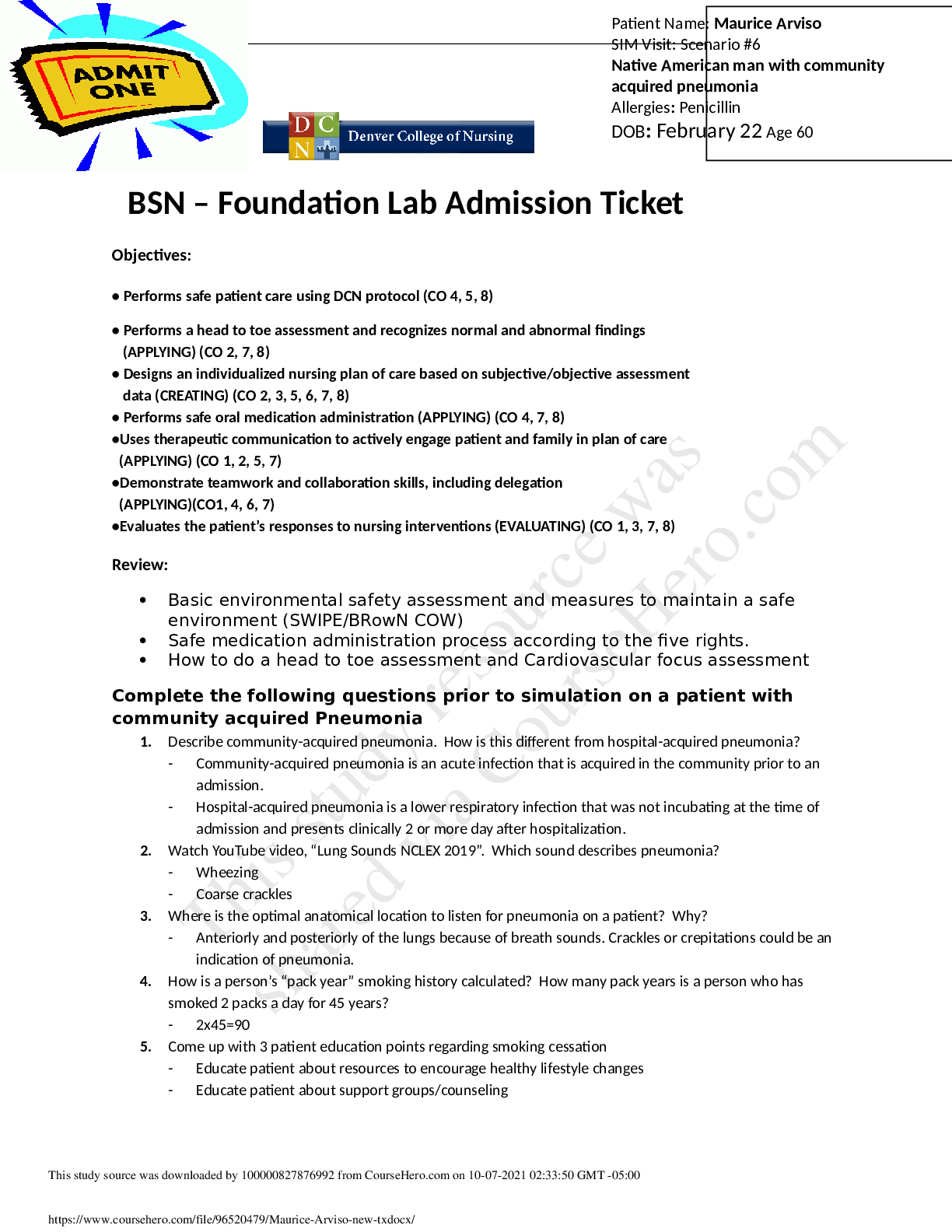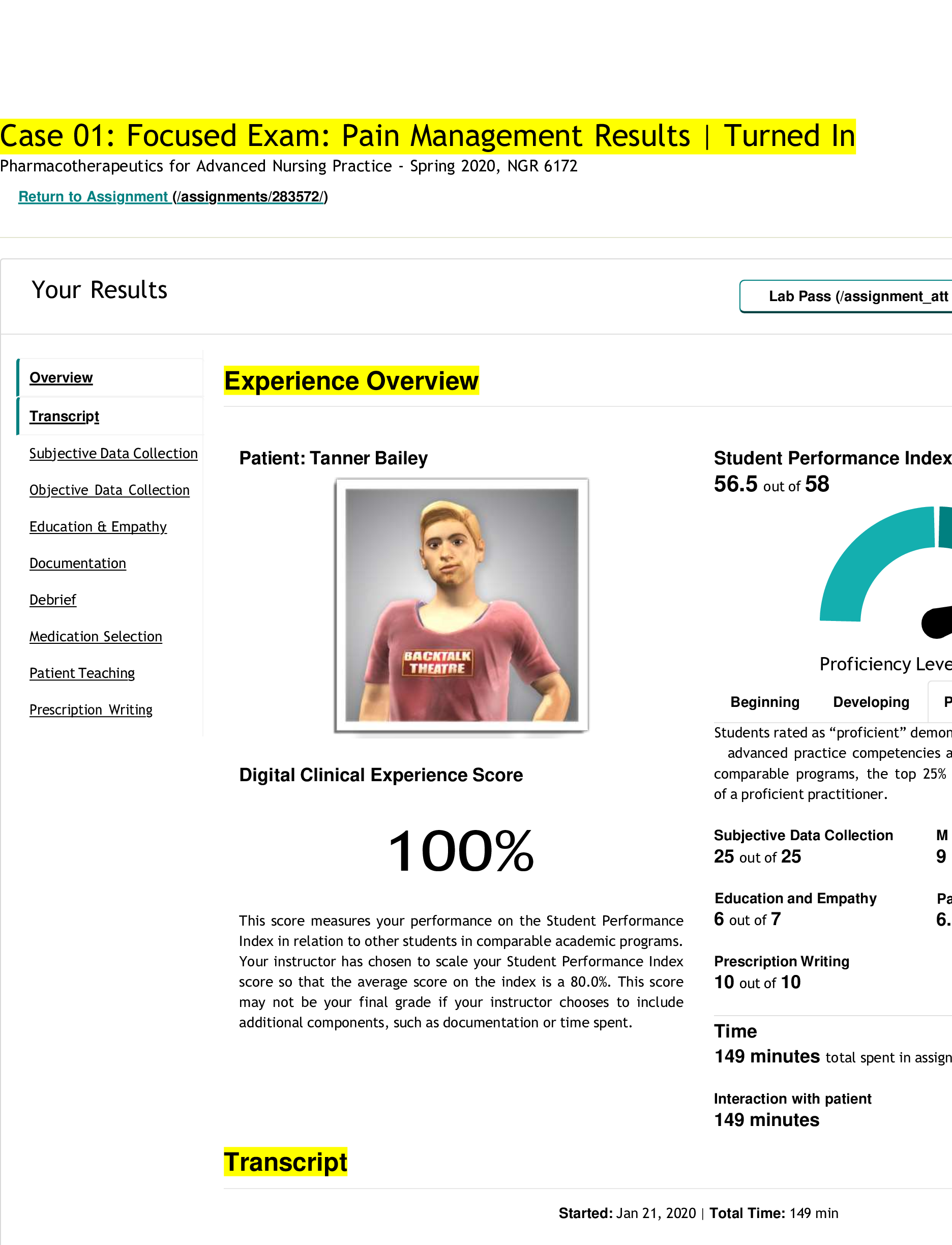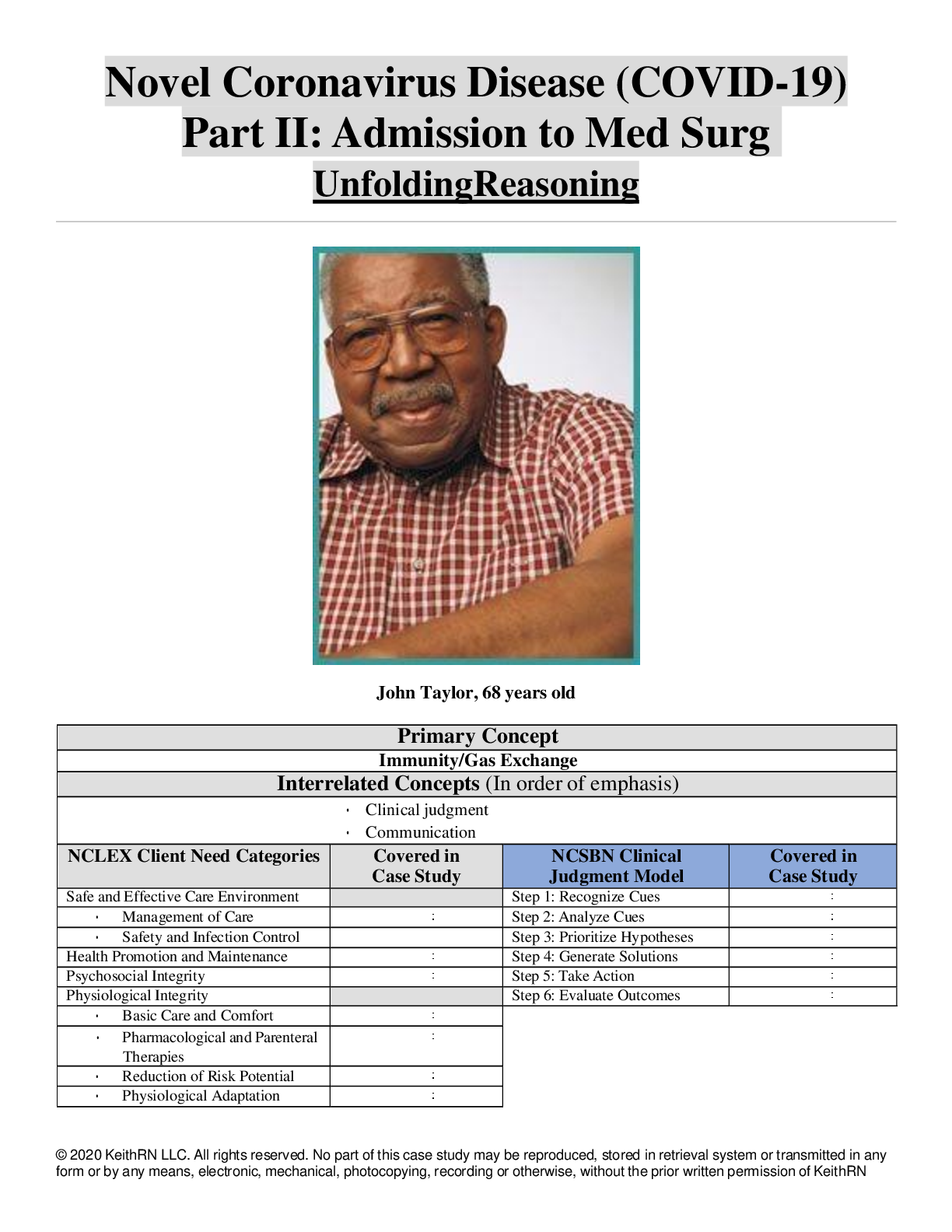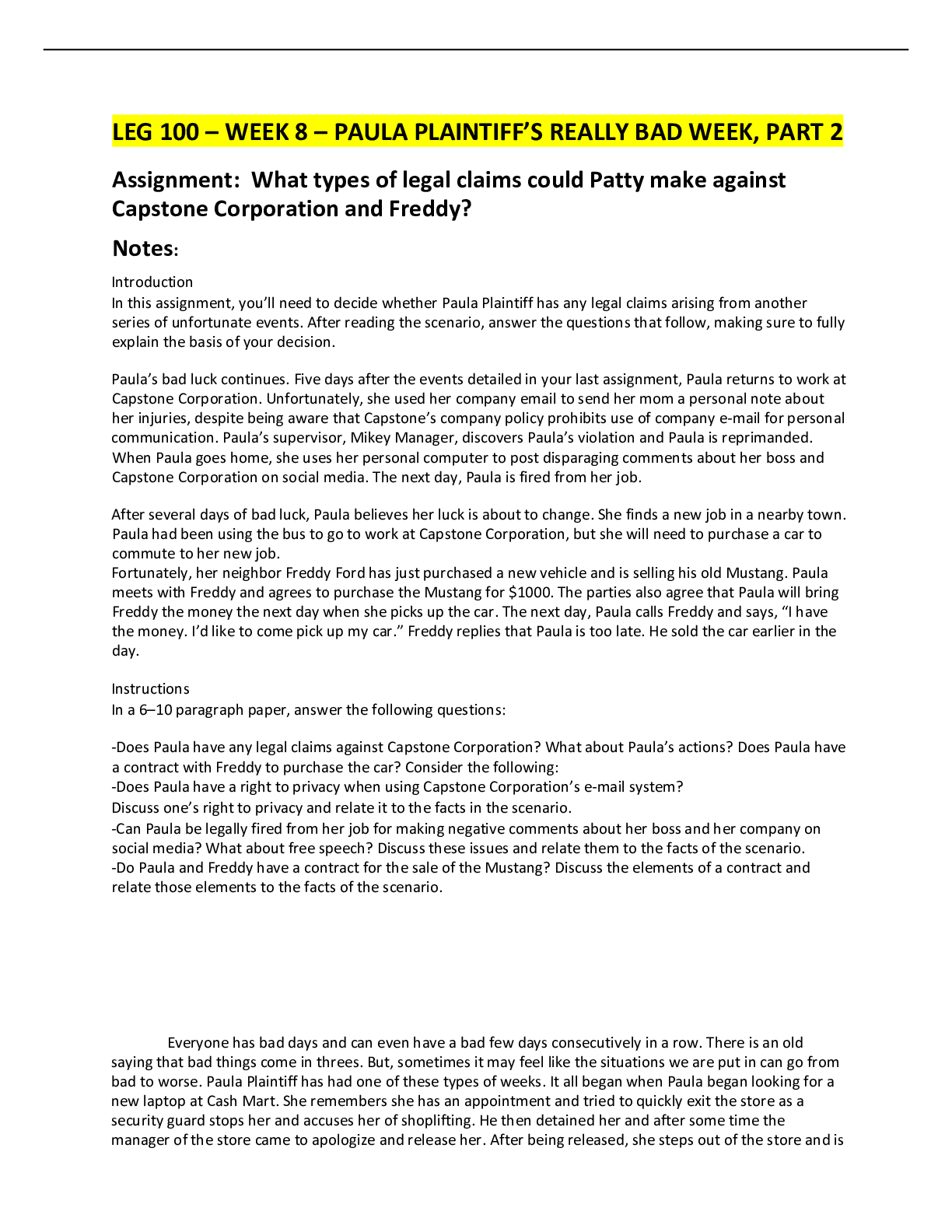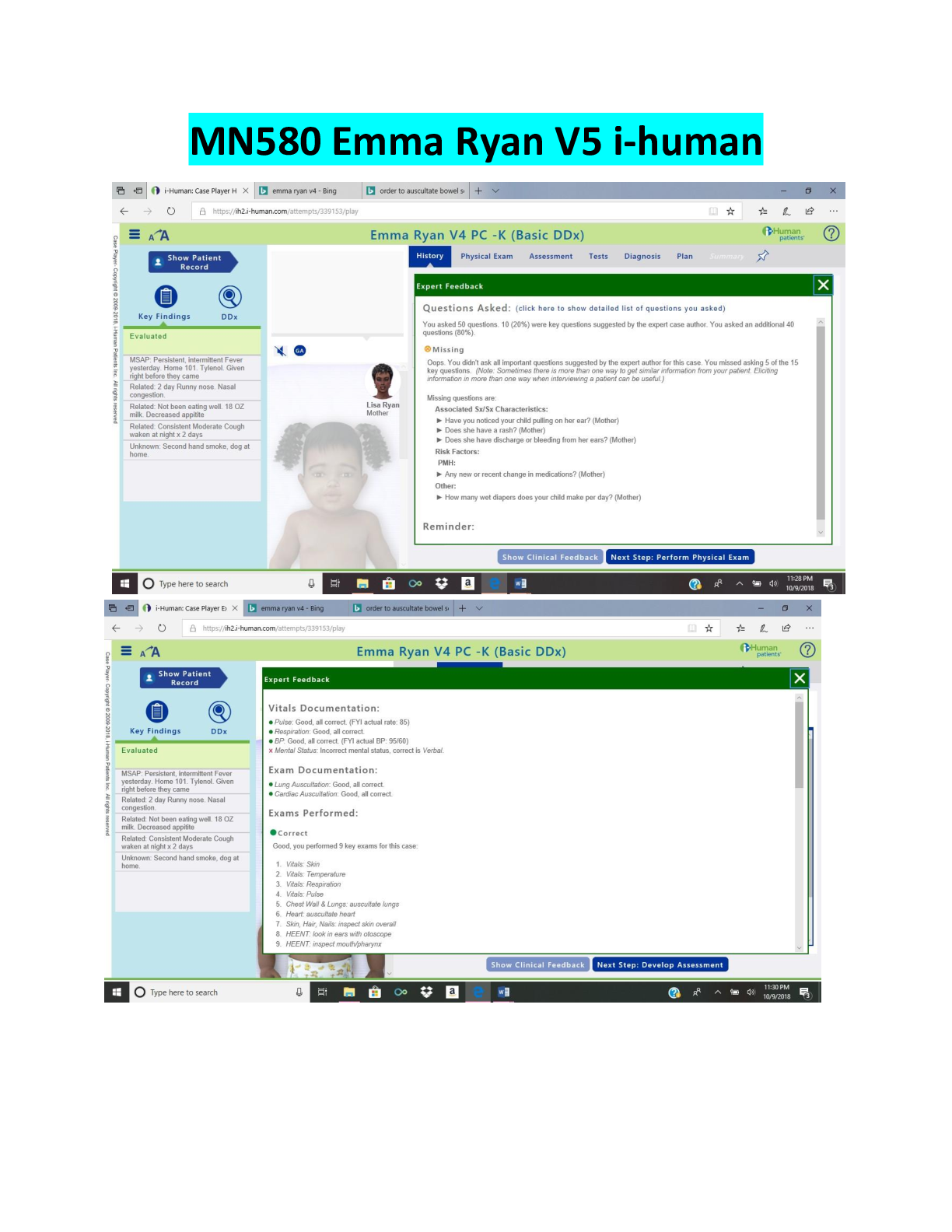Financial Accounting > CASE STUDY > Case Study 5 Tests of Controls The Revenue and Cash Receipts Cycle-Douglas Latino (All)
Case Study 5 Tests of Controls The Revenue and Cash Receipts Cycle-Douglas Latino
Document Content and Description Below
Case Study 5 Tests of Controls The Revenue and Cash Receipts Cycle-Douglas Latino 1. What is the quality of the oral evidence (“inquiries”) that Mitchell is gathering from Mr. Miller? That is, how... competent is this type of evidence? The quality of the oral evidence gathered by Mitchell from Mr. Miller provides less assurance to the auditor than does physical evidence that can be confirmed by a third party. Usually, this type of evidence requires further testing and review of internal documents such as invoices. 2. The case states that accounts receivable offer opportunities for theft. Provide several examples as to how such theft might be perpetrated. Because all records are open to all employees, an employee can simply steal money that comes in from a customer, than write off that account as an uncollectible account to remove any trace of theft. An employee could also edit a customer’s invoice account to reflect cash stolen when a customer goes to pay on his/her account. Because the company offers discounts to customers that pay within a certain time, if the customer pays off the entire amount, an employee could steal the discounted difference and not notify anyone without raising suspicion. 3. Cline also mentions that increased accounts receivable might indicate fictitious sales. How and why would fictitious sales be recorded? Fictitious sales could be recorded by an employee by creating fake customer accounts and making invoices for them to boost sales. An employee might do this in order to boost his or her potential bonus income since it is dependent on their sales. A store manager or even upper management may do this in order to make their individual stores look better on paper. This could again increase a store manager’s own bonus pay or performance review. 4. What information did Miller provide (or fail to provide) that would be troubling to an auditor? During her conversation with Mr. Miller, he indicated that all accounts are open to all employees. This is alarming because access should be limited to few personnel who have a need. Miller also indicated that he alone has access to the subsidiary ledger with no oversight. He could commit fraud for months with no one even noticing until their annual audit. Mr. Miller indicated that credit granting is conducted by the sales department. This is a conflict of interest because their bonus pay is dependent on their sales. The increase number of uncollectible accounts is indicative that sales could be loosening their credit granting in order to make the sale. When asked about how the company came to use 0.7% of net credit sales to determine bad debt expense, Mr. Miller added no insight and said that the company had always used that number. An auditor will probably have to make a new determination that can reasonably reflect the company’s uncollectible accounts. 5. Under what conditions might the auditors omit testing the effectiveness of control procedures? An auditor might omit testing the effectiveness of control procedures if additional substantive tests are more cost effective or easier to conduct than testing for the effectiveness of control procedures. Additionally, if an auditor assesses control risk at the maximum level during the initial evaluation, there is no need for further testing the effectiveness of control procedures. 6. The case states that inherent risk of a material misstatement of the account receivable balance is high. If the firm cannot reduce its evaluation of control risk to below the maximum level, how is planned detection risk affected? That is, what is the impact on planned detection risk of both a high level of inherent risk and a high level of control risk? The impact on planned detection risk of both a high level of inherent risk and control risk is tremendous and the auditor must reduce the level of detection risk. The risk can be reduced to an acceptable level by performing additional substantive testing. 7. What is the difference between positive and negative accounts receivable confirmations? When should one be used over the other? The difference between positive and negative accounts receivable confirmations is that in positive confirmations, customers are asked to respond regardless of whether they agree with the statements. In negative confirmations, customers only respond when the information is not correct and they disagree with it. Negative confirmations are more cost effective and should be used when less evidence is required. If internal controls are weak, positive confirmations should be used over negative confirmations. 8. In selecting receivables to confirm, some accounts are normally chosen at random while others are specifically selected. What attributes indicate that a specific account receivable should be confirmed? Attributes such as if an account is unusually larger than other accounts, activities that are unusual for that customer such as missed payments, accounts that are about to go into uncollectible could all be used to select an account receivable to be confirmed. 9. As one testing procedure used in establishing the existence of reported amounts, the auditor will take a figure found in the financial statements and trace its components back through the various accounting records to the source documents created at the time of the original transactions. This list of forms, records, and documents leading through the accounting system is often referred to as an audit trail. To accumulate evidence about the Accounts Receivable total, assume that you have been assigned to substantiate a number of debit entries in Lakeside’s ledger account. For example, you select a $2,800 debit entry made on July 11, 2012. What items make up the audit trail for this amount, and what information could be gathered from each? Indicate the degree of reliance the auditor should place on the data derived from these individual sources. Refer to Exhibit 4-3. The audit trail is made up of the sales journal, sales invoice, accounts receivable subsidiary ledger, bill of lading, inventory price list, and inventory sales journal. The sales journal shows the journal entry for each sales transaction made. The sales invoice could be used to verify quantities and types of products that were billed to the customer. An auditor could match these to the bill of lading to verify the amount sent to a customer matched the invoice. An auditor could use the subsidiary ledger to compare to the general ledger to see if they match. An auditor could use the inventory price list and inventory sales journal to verify the sales invoice. Because all of the documents in the audit trail are created internally to Lakeside, an auditor could not rely solely on these documents. Additional evidence such as customer confirmations would be needed and possibly collections and bank reconciliations in order to determine that accounts receivable has a fair representation in is statements. 10. Miller said that Lakeside estimates bad debts at 0.7% of sales. How did the company arrive at this 0.7% figure? Is this method reasonable? Why or why not? Why are a client’s accounting estimates a particular problem area for an auditor? What testing is normally performed to corroborate accounting estimates? In Mitchell’s conversation with Mr. Miller, [Show More]
Last updated: 2 years ago
Preview 1 out of 10 pages
Buy this document to get the full access instantly
Instant Download Access after purchase
Buy NowInstant download
We Accept:

Reviews( 0 )
$15.00
Can't find what you want? Try our AI powered Search
Document information
Connected school, study & course
About the document
Uploaded On
Jun 15, 2021
Number of pages
10
Written in
Additional information
This document has been written for:
Uploaded
Jun 15, 2021
Downloads
0
Views
49


